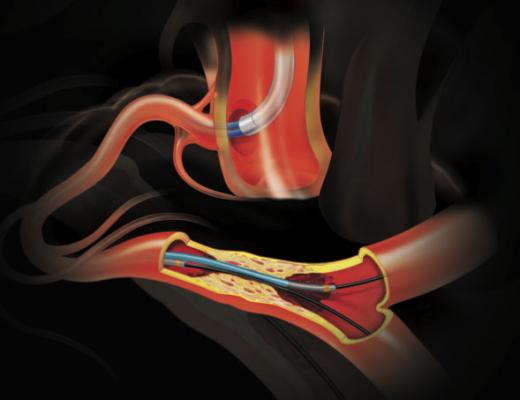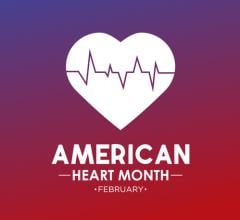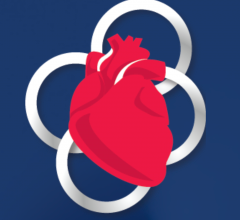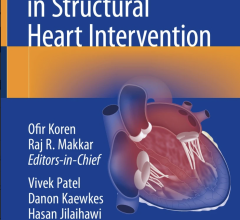
An illustration of Terumo's Finecross guidewire crossing a tight lesion.
While guidewires are a key tool used by all interventionalists in the cath lab, most operators do not have a deep understanding of the basic technologies or definitions used for these devices.
“Many operators don't have an in-depth knowledge of the engineering aspects of wire technology and rely on the wires used by their attending a while in training. Most have no idea about the technology, devices or the materials used,” said Dimitri Karmpaliotis, M.D., Ph.D., FACC, assistant professor of medicine, Columbia University Medical Center, director of CTO, complex and high risk angioplasty, CIVT/NYPH. He is considered one of the top experts in guide wire technology. “Some interventionalists don't have a sound understanding of core material or how different components change the characteristics of the wire. For this reason, they are usually using just one wire for all their cases.”
He said there are a few basic principles that should be stressed when looking at guidewires. “The first principle is there is no substitute for the tactile feel of the wire,” Karmpaliotis stressed, explaining the tactile response of the wire tells the operator what they need to do to navigate past obstructions. The wire response includes resistance, smooth gliding and slipping through bends in vessels, and is important to ensure the wire does not perforate or dissect the vessel wall.
The second principle is that operators need to familiarize themselves with at least a handful of different wires, including some from each class of guidewires so they know what their capabilities are. “It’s impossible to ask for one wire to do everything,” Karmpaliotis said. “You can’t have a single wire that has support, torqueability, safety, etc. You need to give up one property for another. You can’t have it all in one wire.”
He explained this will enable operators to overcome problems when their workhorse wire cannot reach a lesion. Having several guidewire choices creates a toolbox to choose from.
“It is unreasonable for someone to learn about 45 different wires, but you need to know about a handful of these wires,” Karmpaliotis said. Becoming familiar with the tactile feel of a handful of wires will enable the operator to know when they have a break in the core or tip of the device.
Karmpaliotis performs a large number of chronic total occlusion (CTO) cases, but limits himself to just six different types of guidewires. This way, he can become very proficient at using any of these six wires and intimately knows the capability of each. Read the related article that discusses CTO guidewires "How to Tackle Coronary CTOs."
“There are also budget considerations,” he said. “You can’t have 60 different wires on hand in the cath lab.”
Another key principle is that wires need to be safe, which means a workhorse wire should have a soft tip that can maintain its shape, and have a middle of the road stiffness, Karmpaliotis explained. He also said a workhorse wire needs to have a support area for stent and balloon delivery between 6-20 cm from the tip. He usually uses non-hydrophilic wires because these allow more tactile feel to help in navigating vessels and have less chance of causing perforations or dissections than hydrophilic wires.
The Basics of Interventional Guidewire Technology
Karmpaliotis said there are several measures of guidewire performance and all wires have varying ability. Each of these measures depends on the materials and design attributes used. The key metrics for guidewires are trackability, torqueability, flexibility, crossability and supportability. Curtiss T. Stinis, M.D., FACC, FSCAI, director of peripheral interventions, division of cardiology, Scripps Clinic, La Jolla, Calif., also outlined each of these attributes in a TCT 2013 session. Both physician experts explain these features as follows:
• Trackability: Stinis said this is the ability of the wire to follow the tip down a vessel, especially through curves of tortuous vessels. Less stiff, floppy wires can navigate sharp bends much easier than stiff wires. Trackability is affected by how the tip is designed and the material of the core wire.
• Torqueability: He described this as the ability to apply rotational force at the proximal end of the guidewire and have that force transmitted efficiently to achieve proper control at the distal end.
• Flexibility: This is the ability of a wire to flex on its longitudinal axis while maintaining torque and trackability. This is important when reaching a tortuous lesion. The core of wires are either made of very flexible nitinol or stiff stainless steel, which dictates a guidewire’s flexibility.
• Crossability: Ability to cross a lesion with little or no resistance. Stiffer wires can usually cross significant lesions.
• Supportability: Ability of a guidewire to support the passage of another device or system over it.
The performance of a guidewire in any of these areas is determined by the composition materials and design. Stinis and Karmpaliotis outlined the following parameters:
• Core Diameter: This is not the overall size of the wire, but the one element that usually tapers near the tip. Diameter helps determine overall flexibility (smaller diameters) or increased support and torqueability (larger diameters).
• Core Taper: This is the pattern of the wire as it goes from core diameter to the tip. The ability to transmit torque is dependent on taper length, with shorter tapers tending to prolapse (fold in on themselves) and longer offering greater torque. The taper affects traceability and the ability of the wire to follow the tip around bends. Tip taper also determines if the tip is blunt or more pointed like a needle. The pointed tips have the ability to better penetrate and push through CTOs, Karmpaliotis explained.
• Core Type: Usually made of either stainless steel or nitinol. Stainless is good for support, push and torque, but is less flexible. Nitinol is super-elastic, offers good flexibility and torque in tortuous anatomy, and is more durable.
• Tip Style: Guidewires have a core wire that either tapers down to the tip of the wire for added support, or stops short of the tip, with shaping ribbons used at the tip to make the tip more flexible. The way this is designed helps control torqueability.
• Shaping Ribbons / Tip Coils: The end of the wire tip is wrapped in a ribbon of flexible metal to make the tips more flexible and atraumatic. On nitinol wires, the shaping ribbon is required to help retain the shape of the tip. The design of the coils helps determine a wire’s torque and crossability. The use of spring coils can provide more tactile feedback to the operator, but these tips increase the amount of friction, making them more difficult to navigate in tortuous vessels. One recent innovation in tip technology was a micro-cut nitinol sleeve that replaced the coiled metal tip. This technology is used on the Boston Scientific Kinetix and Journey wires. This construction allows the majority of the torque to be transmitted by the sleeve, rather than the core wire, the vendor said.
• Coatings: Wires can be coated in polymers to make them more hydrophilic or hydrophobic. Hydrophobic coatings are usually made of silicone and repel water to reduce friction, increase trackability and offer good tactile feedback. Hydrophilic coatings attract water and the coating becomes a gel when wet. This makes the wires more slippery and reduces friction, helping increase trackability. However, hydrophilic wires are not recommended as a first choice because the slippery tip can slide between plaque and create a dissection during insertion. These wires also can cause perforation and because they have less tactile feedback for tissue resistance.
• Support: This is the level of support a wire provides. Floppy/light wires were originally designed for balloon angioplasty and provide improved trackability and flexibility. Moderate support wires are used for stenting, offering the needed support to deliver and deploy a stent. Extra support wires are often used for stenting or to support buddy wires.
• Tip Load: This is a value of the tip stiffness and a measure of strength based on how many grams of pressure are needed to deflect/buckle the tip.
• Support Catheters: These travel over the guide wire like a sheath to strengthen the guide wire. It can go over a floppy workhorse wire to effectively give the tip of the guide wire enough support to become a CTO wire.
• Wire Length: Most wires are about 180 cm in length, which Karmpaliotis said is long enough for use in both femoral and radial artery access. Some wires are between 330-350 cm, which are designed for retrograde CTO lesion access.
Specialty CTO Guidewires
When performing CTOs, Karmpaliotis said operators need to have a selection of wires to pick from and understand the properties of each in order to quickly solve problems as they arise. The construction of CTO wires is much more complex than workhorse wires, and each is designed to overcome specific types of problems. These include task-specific wires for access, directed penetration, microchannel, collateral crossing, fenestration re-entry, knuckling and externalization.
Wire knuckling is an important skill to learn, Karmpaliotis said. It is done by creating a tight loop when the wire is bent over, which makes a blunt dissection tool by forward advancing a polymer-jacketed guidewire (such as the Fielder XT or Pilot 200). This loop can be advanced past the occlusion.
Once a specialty wire has reached its destination, it always needs to be exchanged with a workhorse wire, he warned. Karmpaliotis said the stiffer CTO wires can cause a lot of trauma to the vessel and are no longer needed once their purpose is served of achieving lesion access. “We may cross a CTO with a Pilot wire, but we would never deliver a stent over that wire,” he said.
Choosing Guidewires and Basic Guidewire Techniques
Stinis offers the following suggestions on wire choice and techniques to use and avoid:
• For straight-forward anatomy, use a trusty workhorse wire;
• For tortuous or calcified lesions, use a hydrophilic/polymer-jacketed wire for reduced friction;
• For relatively straight vessels, if you are unable to deliver a balloon or stent, try using an extra support wire alone or as a buddy wire;
• For a tortuous or calcified vessel where you cannot deliver a balloon or stent, try using a Wiggle wire;
• For a CTO with a possible microchannel, try a Fielder XT to attempt microchannel engagement;
• For a CTO with no microchannel, try a stiff-tipped CTO wire for penetration; and
• If not sure which wire to choose, try your workhorse first and see how it behaves. It can help direct you to the correct wire.
Tips for Optimizing Guidewire Performance
• Appropriate tip shape for lesion/vessel;
• Maintain free movement of wire tip;
• Withdraw or re-position if needed;
• Avoid undue force;
• Prolapsing soft wires can aid in avoiding side branches;
• Avoid excessive rotation; and
• Do not lose wire position. But if you do, use caution crossing a previously dilated portion of the vessel to avoid entering a dissection plane.
For more information on guidewire technology, read the article "The Basics of Guide Wire Technology."
Interventional Guidewire Comparison Chart
This article served as an introduction to a guidewire product comparison chart. To access the chart, go to www.dicardiology.com/content/guidewires. Access requires a login, but to create one is free and only takes a moment.


 March 21, 2024
March 21, 2024 








